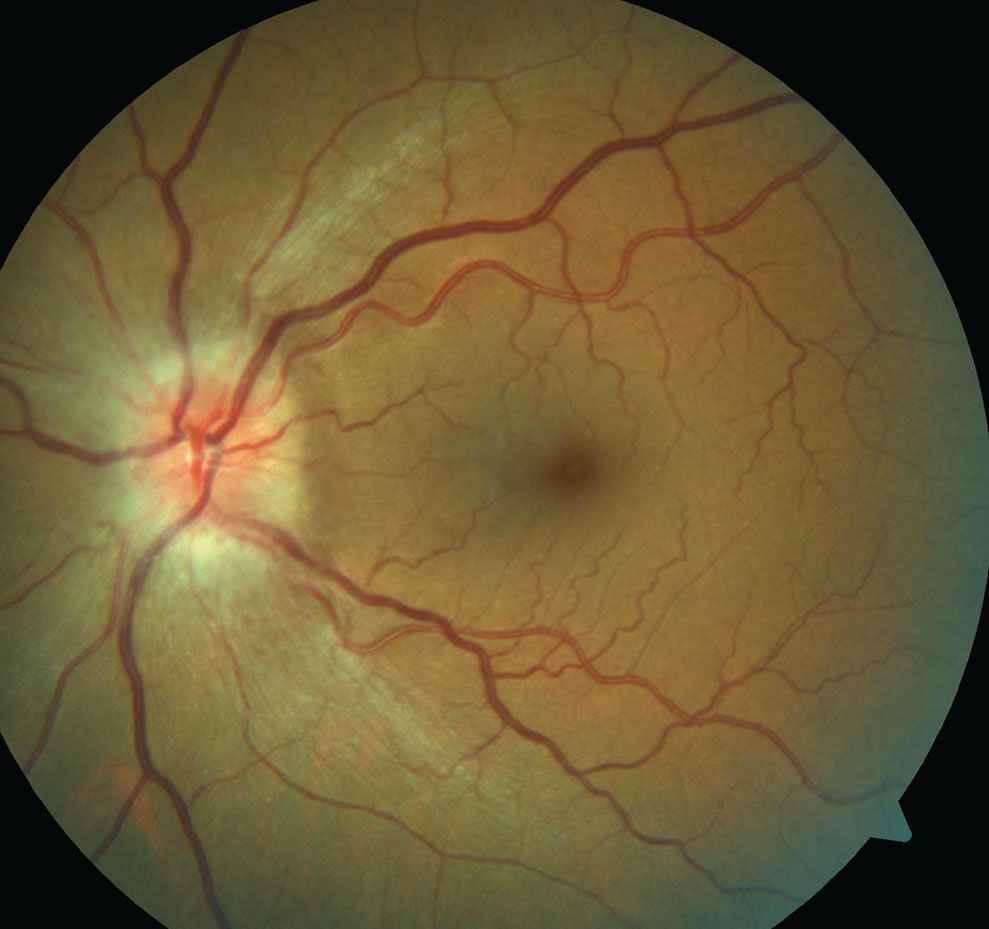 |
| White patients comprised 91.1% and 78.9% of NAION cases in centers in Atlanta and New York, respectively, suggesting differing risk factors by race. Photo: Michael Trottini, OD, and Candice Tolud, OD. Click image to enlarge. |
Editor’s Note: As part of our “Year in Review” retrospective, we’ve selected the top 30 news stories of the year and are re-sharing them as we close out 2023. Follow along as we count down to number 1!
This story was originally published March 24, 2023.
No. 5 biggest news story of 2023
While a few previous clinical trials have touched on the influence of race and ethnicity on non-arteritic anterior ischemic optic neuropathy (NAION) development, the general inclusion of a majority Caucasian base in studies has prompted questions of whether this make-up biases the results. As such, a new study appearing in the American Journal of Ophthalmology addressed the question of whether NAION is truly experienced by a mostly white population, finding it to indeed be so.
The researchers collected data from large, urban academic centers in Atlanta and New York. All NAION patients evaluated in these centers from 2014 to 2022 were included in the retrospective study. To assess racial accessibility of services, a similar number of idiopathic intracranial hypertension (IIH) patients seen in the same services were also included.
Patients’ self-reported race at neuro-ophthalmic examination were collected, then compared with Census data in 2020 for Georgia and New York, as well as the total US population.
Researchers found both locations reflected a high majority of white patients reporting NAION, with rates totaling 91.1% in Atlanta and 78.9% in New York. Black patients comprised 7.3% of patients seen in Atlanta and 3% in New York, while Asian patients only made up 1.2% of Atlanta patients and 5.9% of those in New York. Additionally, the NAION patient group reflected a much higher proportion of white individuals than the IIH patient group.
When compared to the states and general US populations, the white percentage of cases was also significantly higher. The white population is 55.7% in Georgia, 60.5% in New York and 68.6% in the United States.
Accordingly, the study authors concluded that “our results of a disproportionate percentage of white patients with NAION are in overall agreement with previously published data, confirming that patient inclusion in recent large clinical trials likely was not biased and represents the population of patients with NAION in the United States.”
The study authors noted that they cannot entirely rule out that patient access at the two clinics does not reflect some aspect of racial bias for NAION patients. However, the racial distribution of IIH patients makes this possibility unlikely. Both institutions also see patients with most insurances as well as those with no insurance.
Previous literature has suggested racial differences seen with NAION may be due to differences in optic disc topography or because white patients may have smaller cup-to-disc ratios than other races.
Building on this theory, the study authors proposed that “future studies should focus on racial differences in cup-to-disc ratio and other ocular (including the differences in sclera and lamina elasticity by race), as well as systemic, risk factors in NAION patients.”
Banc A, Kupersmith M, Newman NJ, Biousse V. Race distribution in non-arteritic anterior ischemic optic neuropathy. Am J Ophthalmol. March 21, 2023. [Epub ahead of print]. |

